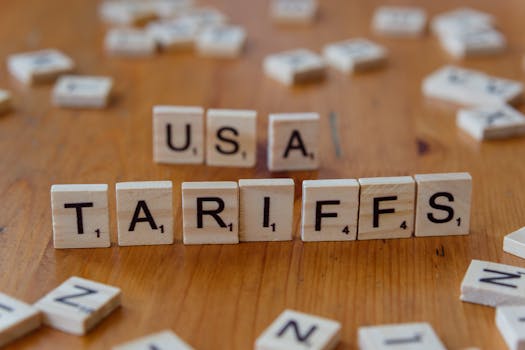PWG Business News: Your Gateway to Market Intelligence
PWG Business News is committed to providing real-time updates and expert-driven insights across various industries, including technology, healthcare, finance, energy, automotive, and consumer goods. We deliver carefully curated news, financial reports, and research-based updates, helping businesses and professionals stay informed and competitive in today’s dynamic business environment.
Our News section covers industry-shaping events such as market expansions, new product launches, mergers and acquisitions, policy shifts, and corporate earnings, offering a strategic advantage to decision-makers seeking actionable intelligence. By bridging industry leaders, stakeholders, and professionals with data-driven content, we empower our audience to navigate the complexities of the global market with confidence.
PWG Business News: Keeping You Ahead in the Business World
At PWG Business News, we deliver timely and credible business news, covering global market trends, economic shifts, and emerging opportunities. With comprehensive coverage spanning healthcare, technology, telecommunications, utilities, materials, chemicals, and financials, our platform provides accurate, well-researched insights that drive success for executives, investors, and industry professionals alike.
Whether you're tracking regulatory updates, innovation trends, or strategic collaborations, PWG Business News ensures you have access to high-quality, data-backed reports that enhance brand visibility, credibility, and engagement. Our mission is to keep you ahead by serving as your trusted source for impactful industry news and market intelligence.
Stay informed with PWG Business News – your gateway to the insights that shape the future of business.
Consumer Staples

The recent introduction of President Donald Trump's reciprocal tariffs has sent ripples through the global trade landscape, challenging decades of precedent and sparking intense debate about the effectiveness of international trade policies. These tariffs, aimed at correcting the long-standing trade deficits and promoting fair trade, have been imposed using the International Emergency Economic Powers Act (IEEPA), marking a significant shift in U.S. trade strategy.
For years, the United States has faced substantial trade deficits, largely attributed to non-reciprocal trade practices and tariff disparities among countries. These imbalances have led to the deindustrialization of America, weakening its manufacturing base and threatening national security by making critical supply chains dependent on foreign countries[1][4].
President Trump's response to these imbalances includes the introduction of a 10% tariff on all countries, effective April 5, 2025. This baseline tariff serves as a starting point, with the option to increase tariffs on countries with significant trade deficits with the U.S.[1]. However, just days after implementing country-specific tariffs, Trump paused these higher rates for 90 days, opting to maintain the 10% tariff across most countries except for China[3].
The imposition of these tariffs has both economic and political implications, sparking a mix of reactions globally.
Tariffs have long been a tool in international trade, used to protect domestic industries and correct imbalances. However, the scale and unilateral nature of Trump's tariffs mark a departure from recent trade policy norms.
For businesses and consumers facing these new tariffs, there are strategies to minimize the impact:
Diversify Supply Chains: Reducing dependence on single-country imports can mitigate tariff risks.
Manufacturing Re-shoring: Encouraging production back in the U.S. can avoid tariffs altogether.
Tariff Exclusions: Applying for exemptions for critical goods not produced domestically.
Trade Negotiations: Encouraging policymakers to renegotiate trade agreements that address underlying imbalances.
President Trump's reciprocal tariffs represent a bold move to address long-standing trade imbalances, but they also come with significant risks and uncertainties. Whether this strategy succeeds in rebalancing trade and revitalizing U.S. manufacturing remains to be seen, as global markets respond and governments negotiate new terms. The ongoing narrative of these tariffs will continue to influence the future of international trade, marking a pivotal moment in the history of global economic relations.